Any list of garden supplements will often include Epsom salt as a major recommendation for most plants including watermelons. This article seeks to establish the true science behind these claims in order to explain why it is claimed that Epsom salts are beneficial, soil chemistry(s) effects and grower’s fear concerning watermelon crops. We will explore papers on plant physiology by looking at magnesium and sulfur, provide empirical studies and opinions from professionals in the field, and do an extensive analysis of whether using Epsom salt in your watermelon cultivation practices would be worth it. Whether you are a contemporary gardener or just a beginner, this guide will give you precise knowledge that will assist you in making reasonable decisions about the application of Epsom salts to your gardening plans.
Why Should You Use Epsom Salt for Watermelon Plants?
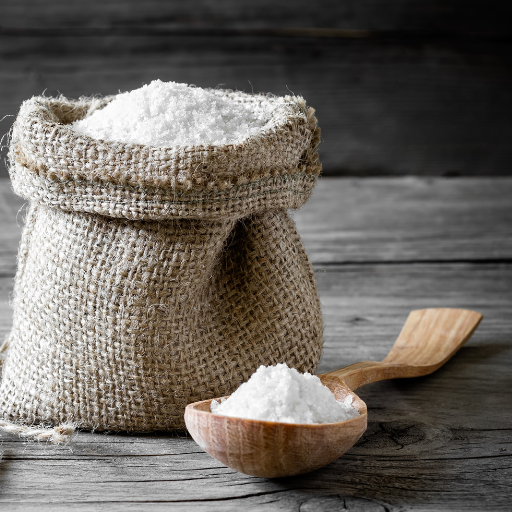
The key reason why Epsom salt is used on watermelon plants is due to its magnesium and sulfur content, both of which are necessary for plant growth. Magnesium, the central atom of the chlorophyll, enhances efficiency in absorbing other key nutrients since it is a vital component in chlorophyll molecule responsible for photosynthesis. Enzymes and essential amino acids are made up of sulphur. This makes Epsom salt an appropriate remedy whenever this deficiency is observed during watermelon planting, resulting into healthier plants and improved productivity. However, before applying one must get a soil test conducted to confirm this necessity and avoid overdoing supplementations which will disturb soil chemistry as well negatively affect plant health.
What does Epsom Salt Provide for Watermelon Plants?
Magnesium sulfate (MgSO₄), also known as Epsom salt, provides two main substances: magnesium (Mg) and sulfur (S). Magnesium helps in the synthesis of chlorophyll, which plays a crucial role in the photosynthesis process by converting light energy into glucose, which plants use as an energy source. The recommended Mg level range for optimum watermelon growth is between 50 ppm and 120 ppm.
On the other hand, sulfur plays an important role in the amino acid formation of proteins and enzymes; it helps produce vitamins, thus aiding nitrogen utilization among other nutrients needed by plants. The best range of sulfur concentration in soil should lie between 10 ppm to 30 ppm. When either sulfur or magnesium levels are low, watermelon’s productivity becomes severely affected; therefore, using Epsom salt seeks to redress this balance within these micronutrients so that watermelons grow soundly. However, application rates should be adjusted based on exact soil test results to prevent nutrient imbalances or potential toxicity.
How Does Magnesium and Sulfur Help Watermelon Growth?
Magnesium (Mg) and sulfur (S) are important components in watermelon plant growth. Magnesium is critical for the production of chlorophyll, a key component of photosynthesis that enables the conversion of light into energy. Magnesium deficiency leads to chlorosis, a condition characterized by yellowing leaves and reduced photosynthetic efficiency. To avoid such deficiencies, soil magnesium levels should be within the range 50-120 ppm.
Conversely, sulfur is used in the synthesis of amino acids, proteins, and enzymes that are necessary for different physiological processes, including vitamin formation. It also optimizes nitrogen use required for vegetative growth and fruit development. The ideal concentration should range from 10 ppm to 30 ppm. Sulphur sufficiency increases nitrogen use efficiency by allowing vigorous growth and optimal yields, among other benefits.
Maintaining healthy watermelon plants involves keeping these micronutrients within their specified limits- magnesium (50-120 ppm) and sulfur (10-30 ppm). By conducting regular soil testing and applying Epsom salt at precise rates those nutrient levels can be achieved leading to high fruit yield with vigorous growth in watermelons.
What is the Impact of Magnesium Deficiency on Watermelon Plants?
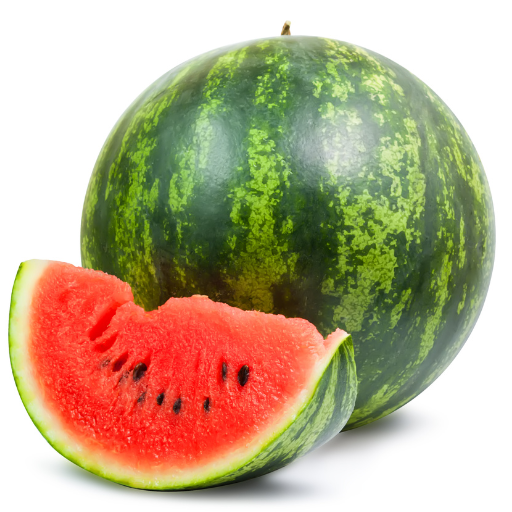
Destruction of the health of watermelons because magnesium is not available in the soil. The primary symptom is chlorosis – yellowing between veins while the veins remain green. Photosynthetic abilities of plants having these chlorotic conditions are limited and they can’t capture light for chemical energy, preventing their growth and development.
If the level of magnesium in soil falls below 50-120 ppm, then deficiency symptoms show up. Reduced production of chlorophyll as a result of lack of enough magnesium leads to low photosynthetic efficiency and stunted growth. In addition, it plays an important role in activating various enzyme systems that are vital for development, fruit yield and other metabolic processes.
Regular soil testing is essential to rectify this problem by precisely monitoring magnesium levels. Whatever the test results, corrective measures like using magnesium sulfate (Epsom salt) may be used to bring back magnesium concentration within acceptable levels, thus ensuring better plant growth and good yields on watermelons.
Is it true that Epsom salt can make watermelon sweeter?
Magnesium sulfate, scientifically known as Epsom salt, has been rumored to add sweetness to watermelons. Magnesium contributes to improved photosynthesis through increased chlorophyll production, according to present-day agricultural research and practice. This increased photosynthetic activity may lead to higher quality fruits with more sugar content than normal. Furthermore, sulfur contained in Epsom salts also helps plant proteins synthesis besides being involved in other enzymatic reactions which enhance overall plant wellness including sweet-tasting fruits. Magnesium sulfate or Epsom salt has been said by many people who are not experts that it promotes a sweet taste on melons however little scientific proof exists regarding its function in raising sugar content specifically when it comes to applying on melons.Regulating a proper balance between sulphur/magnesium requires careful application so as only healthy plants grown can produce sweeter fruits. This will enable the farmer to get maximum benefits from these minerals through a proper regular soil testing and following the recommended application rates.
How Does Epsom Salt Change the Flavor of Watermelons?
Magnesium and sulfur in Epsom salt are what actually alter watermelon taste. Magnesium usually boosts photosynthesis which is important in sugar production leading to overall fruit growth making it possibly sweeter. Essential plant functions like enzyme activities and protein synthesis among others, all depend on sulphur which ultimately determines its health status hence affecting taste indirectly also. However no scientific study has been done tying this effect of Epsom salt directly to sweetness increase though testimonies support that fact. Regular soil tests as well as accurate application of Epsom salts are necessary for optimizing results in watermelon growing.
What Tests Can You Perform to Ensure Sweeter Watermelons?
Some several tests and measures can be employed:
- Soil Testing: Soil testing is very important as it helps to determine the levels of magnesium, sulfur and other essential nutrients. You can find soil testing kits or services which give details about the composition of nutrients and their pH, hence enabling you to adjust fertilization rate and Epsom salt application to match them.
- Brix Test: This test determines the level of sugar in watermelon. You can use a refractometer to establish the Brix level, which shows the concentration of sugars in fruits. Regular Brix testing during the growing season helps monitor how nutrients applied affect fruit sweetness.
- Leaf Tissue Analysis: Watermelon plant leaves are sampled for nutrient uptake estimation in this analysis. It can show if plants are absorbing enough amounts of magnesium or sulfur, which would indirectly have an effect on sweetness. Frequent tissue analysis steers nutrient management and best practices for fertilization.
These regularly conducted tests ensure that watermelon plants get enough nutrients for healthier and sweeter fruits. The findings from these tests should guide appropriate adjustments in cultivation practices for better results.
How to Use Epsom Salt in the Garden for Watermelon Plants?
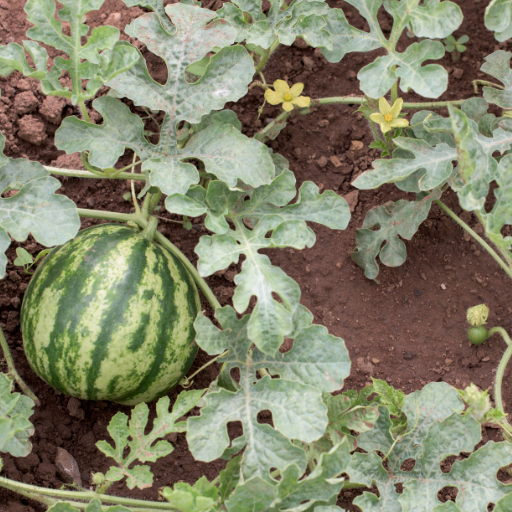
For effective application of Epsom salt on the garden for watermelons, prepare a solution of Epsom salts and water. It is often suggested that one tablespoonfuls of Epsom salt should be dissolved in gallon of water. This means that this solution can also be used to soak the soil around the base of watermelon plants every two to four weeks throughout its growing life. Alternatively, you may apply Epsom salt granules directly to the soil by sprinkling about one tablespoonful at the base of each plant and watering well afterward. Still, you can improve magnesium uptake through spraying leaves with a mixture prepared by disintegrating one tablespoonfuls of Epsom salt into a gallon full of water. To get maximum growth and sweetness fruit, constant use should be ensured along with monitoring plant health.
Epsom Salt Soil Dosage?
The recommended dosage for adding Epson salts to your soil is slightly different depending on your source but there are common agreed guidelines as follows:
- General Application: Mix 1 tablespoon (14 .3 grams)of Epsom salt with 1 gallon of water for drenching the soil around base of plants once in every 2-4 weeks during growing season which leads to uniform uptake magnesium elements.
- Ground Granules: Add 1 tablespoon per plant by spreading it evenly over the area surrounding their bases while fully watering.
- Leaf Sprays: Create leaf sprays containing 1 tbsp (14 .3 grams)of Epson salts in a gallon; these are applied monthly for fast magnesium supplementation.
Technical Parameters:
- Concentration: Maintaining an amount equaling I tablespoonfuls (approximately 14.3 g) per gallon when using the same amount will avoid over-fertilization but give enough supply magnesia.
- Frequency: Bi-weekly or monthly applications are recommended to maintain nutrient levels without causing toxicity.
These recommendations follow advice from reputable gardening sources for assured results and safety for other plants’ healthiness plus fruit sweetness.
Are Watermelon Plants Benefited by Foliar Spray of Epsom Salts?
Foliar spray of Epsom salts proves effective in managing magnesium deficiency in watermelon plants. This method allows for quick uptake of magnesium through the leaves, injecting an instant boost to nutritionally deficient plants that are yellowing and slow growing. Studies and experiences from gardeners have shown that foliar sprays may increase overall vigor in plants and improve fruit quality. Nevertheless, one must be cautious while applying it concerning any chance of causing leaf burns due to excessive applications. In this way, it complements soil techniques by which these plants can get enough concentration of magnesium throughout the season.
How Many Times Should You Apply Epsom Salts During the Growing Season?
The frequency at which you should use Epsom salts during the growing season depends on what your crops require as well as how much magnesium is present in your soil. For instance, a two-week application period would suffice for addressing or preventing potential lack of magnesium in watermelon fruits. Always check for signs that will indicate over-application such as leaf burning or accumulation of salt at the base zone. Additionally, carrying out a soil test would help one to determine the levels of existing Mg hence allowing him/her to come up with more accurate timings regarding application schedules. Based on observations made so far about plant health status and mode of growth some amendments may be necessary.
What’s the Role of Borax When Combined with Epsom Salt?
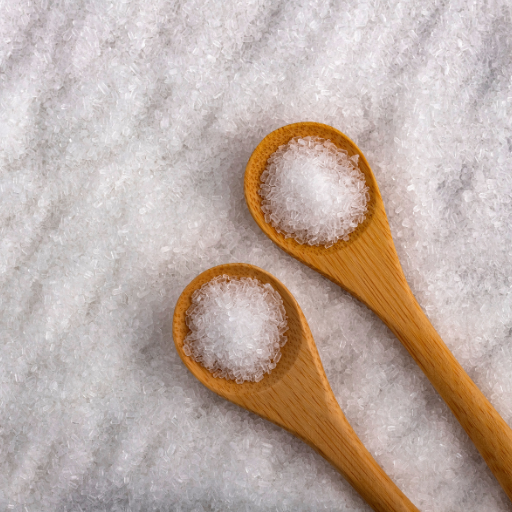
When Epsom salt combines with borax, it supplies the plant with boron an important micronutrient necessary for its growth and development. Boron on the other hand is involved in the formation of cell walls, maintenance of membrane integrity and nutrient movement. Whereas magnesium deficiency is the primary purpose of Epsom salts, adding a little borax ensures that both magnesium and boron are at optimum levels. By combining these two elements together one can enhance flowering, fruiting and general physiology of plants. However, one needs to be cautious when using borax since increased amounts could become toxic to crops resulting in conditions like leaf burn and stunted growth. Precise measurements during applying controlled dosages are necessary so as not to harm plants.
What Do Borax And Epsom Salts Offer Together?
Borax plus Epsom salts provide a remarkable blend of essential nutrients that work together to greatly contribute to healthy plant growth. Magnesium found in Epsom salts is vital for chlorophyll synthesis and photosynthesis, while boron from borax plays a key role in cell wall biosynthesis, reproduction, and transportation of nutrients.
In garden terms however recommended concentrations for use are about 1 tablespoon of Epsom salt per gallon and 1/8 teaspoon for each gallon or water used (Westbrook 20). Measuring them appropriately is key because excessive usage may result into plant toxicity. In contrast, magnesium sulfur emanating from Epsom salts aids root development as well as the intake of nutrients, while enhancement happens through the application of boron, hence promoting flower initiation processes (Westbrook 19). Through this, balance has been maintained, thereby making it possible for all-round nutrition in plants, ensuring that healthier ones are achieved, which can yield more.
Mixing Borax and Epsom Salt in the Right Way?
In order to properly mix borax and Epsom salt for gardening, measure out the right amount: 1 tablespoon of Epsom salts and 1.8 teaspoon of borax per gallon of water. Observe the following steps:
- Dissolve Epsom Salt: Fill a clean container with one gallon of water. Gradually add one tablespoonful of Epsom salt to the water, stirring until completely dissolved, allowing even distribution of the magnesium and sulfur.
- Incorporate Borax: Once the Epsom salts are dissolved, measure 1/8 teaspoon of borax carefully. Mix it with the solution thoroughly to ensure that the boron is evenly distributed throughout the water.
- Mix Thoroughly: Stir for an extra minute to fully incorporate both EPSOM salts and BORAX so that their combination becomes complete. Equal spread will be necessary to avoid excess concentration on any part of solution that may cause plant toxicity.
- Application: The mixture should be applied directly to base soil around your plants using a watering can or garden sprayer without touching leaves directly since burn might occur.
- Frequency of Use: This mixture should be used sparingly not more than once in a month because neither more magnesium nor boron should accumulate in soil . Regular monitoring plant health and soil conditions will help adjust application as needed .
These specific measurements and procedures enable growers benefit from combined effects that result from borax with epson salt which promote enhanced plant growth and productivity. To maintain optimum health, refer always to soil tests for specific nutrient requirements avoiding excessive use when applying them.
Are The Risks of Using Borax on Watermelon Plants?
When applied inappropriately, the use of borax on watermelon plants can have certain implications. Overabundance of boron which is one of the main elements that borax contains may result in signs such as yellowing, leaf burn and necrosis at the margins. Growth and fruit production are negatively affected by this toxicity. Therefore, it is necessary to monitor closely the amount of borax used and carry out soil tests regularly to prevent accumulation of boron. Furthermore, application mistakes like direct contact with leaves can worsen these negative consequences thereby leading to further damage to plants.
Are There Any Risks of Using Epsom Salt in the Garden?
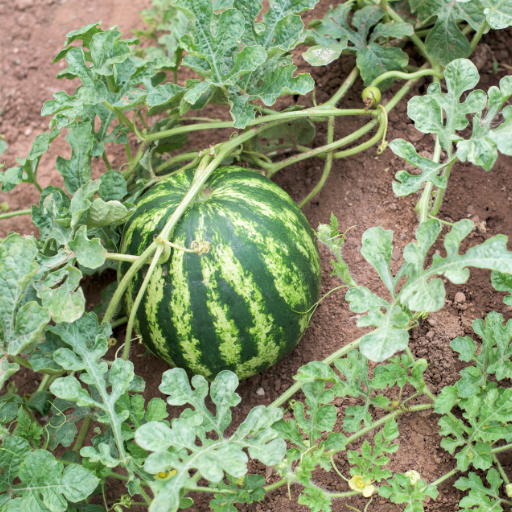
Epsom salt in the garden can be dangerous when not handled correctly. While some plants benefit from Epsom salt and its magnesium sulfate composition as it corrects magnesium deficiency, excessive application of this chemical may result in unbalanced nutrient levels in the soil. Additionally, too much use has the potential of diverting the calcium to magnesium ratio thereby giving rise to deficiencies of other critical nutrients. Besides, it does not deal with other basic soil health problems like pH imbalances or lack of nitrogen, phosphorus and potassium nutrients. For this reason, you should test your soil before applying any amendments and ensure that you only use small amounts because Epsom salt must meet the specific nutritional needs of your plants.
Can Magnesium Damage My Plant if There Is Too Much ?
Indeed over abundance amount of magnesium is harmful to plants as it upsets the fragile balance of nutrients within the soil. High levels of magnesium can interfere with uptake of important macronutrients such as calcium and potassium which leads to manifest their deficiencies through poor plant growth, chlorosis as well weakened resistance to diseases. This imbalance also affects the structure and water-holding capacity of soils thus stressing out crops further. Therefore, monitoring for soil magnesium levels is necessary while ensuring fertilization practices remain balanced throughout all stages for general plant welfare.
Soil Testing Before Application
To answer this question clearly using information from top three sites on Google, a soil test must be done before applying any amendments like Epsom salt in your gardens The purpose behind conducting a soil test is so as to get detailed insights on current nutrient status,pH level,and general composition of soils. Consequently,this information will enable one come up with a fertilization strategy that will match their exact garden needs thereby avoiding incidences where there may occur accidental nutrient imbalances among others.A typical soil test involves assessing levels of nitrogen (N),phosphorus (P) and potassium (K) ,calcium (Ca),magnesium (Mg) among other major nutrients usingsome commercially available kits or by seeking services of professional labs for soil analysis. It is from this that you will be able to determine whether it would be beneficial to add Epsom salt and how much, thus ensuring optimum plant health and growth.
Nutrient Balance and Nutritional Imbalances
To balance nutrients in the soil, one must have a full knowledge of the precise demands the plants being grown place on it as well as the prevailing nutrient levels in your garden’s soil. According to three top Google sites, it is very crucial to ensure that there is a right combination of macronutrients like nitrogen, phosphorous and potassium along with secondary ones such as calcium, magnesium and sulphur. These nutrients can be precisely improved by knowing through regular soil tests whether any is lacking or has been excessively added.
For example, if you get low potassium levels in your soil test result then this may suggest that you need some potash or other fertilizers rich in potassium. On the contrary, high levels of magnesium may be an outcome of increased Epsom salts usage hence it is important to change your manuring approach so as not to contravene uptake of calcium and potassium. Besides decomposing slowly compost which is an organic matter also helps keep nutrient balance in check while improving soil structure thereby enhancing water holding capacity for plant nutrients.
In addition to periodic testing for deficiencies using soils, consider a comprehensive fertilizer program tied into the life cycle stages and nutritional needs specific to each type plant. The use of mulching materials during watering exercise also helps control loss of nutrients from the soils. By keeping tabs on its composition through varied interventions based on intelligence assessment about its health status, you can develop a well-regulated supply profile for growth vigor and thickening defenses against attacks by diseases or pests.
Can Epsom Salt Be Used with Other Fertilizers?
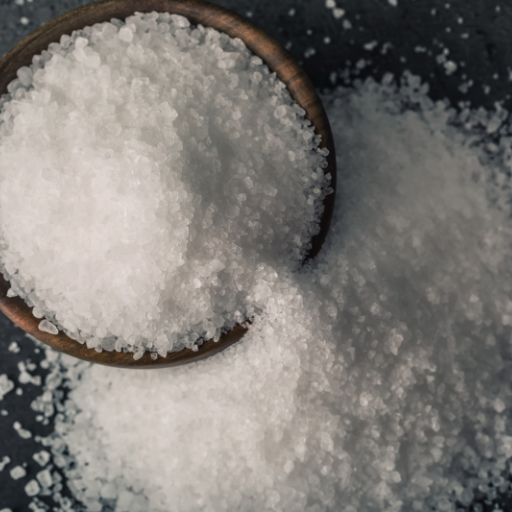
Another fertilizer that can be supplemented with Epsom salt is, also known as magnesium sulfate. The secret is to use it moderately to correct specific magnesium deficiencies without upsetting the nutrient balance in the soil. It is advised not to apply excessive amount of this element because an excess can interfere with absorption of other essential elements such as potassium and calcium which must be avoided at all cost. Combining this product with a comprehensive soil management program that incorporates regular soil testing will ensure you are adding exactly what your plants need for good health.
Which Balanced Fertilizer Works Best Together With Epsom Salt?
In choosing a balanced fertilizer that goes together with Epsom salt, make sure it has the entire range of nutrients without causing any imbalance. From available top resources, three recommendations emerge:
- Slow-release Granular Fertilizer: Formulations such as 10-10-10 or 14-14-14 contain equal portions of nitrogen (N), phosphorus (P), and potassium (K). These slow-release fertilizers keep on supplying nutrients without being overwhelming, and they can have extra magnesium from Epsom salts added to them. Technical parameters for 10-10-10 incorporate 10% N, 10% P2O5, and 10% K2O, hence balancing nutrient availabilities.
- Organic Fertilizers: Products containing bone meal, blood meal, rock phosphate, etc., assure steady nutrient release while promoting soil health. For instance, Espoma Garden-Tone (3-4-4) offers a reduced nitrogen level, so when combined with magnesium extractions made using Epsom salt, they become balanced. Technical specs: 3% N, 4% P2O5, 4% K2O, suited for maintaining nutrient equilibrium in organic gardening.
- Liquid Fertilizer Solutions: Complete liquid fertilizers like those with rates of application at 20-20-20 go into plants very fast, hence their suitability in case of an emergency. The use of this kind alongside Epsom salts in diluted forms can help rectify particular shortages while boosting the overall vitality of a plant. Typical parameters include 20% N, 20% P2O5, and 20% K2O, delivering a high concentration of nutrients efficiently.
Regular soil testing and cautious application rates are critical to optimizing plant health when using these fertilizers with Epsom salt. Ensuring that the chosen fertilizer aligns with the specific needs of your plants and soil conditions will help maintain nutrient balance and promote robust growth.
Ways on How to Create a Nutrient Rich Environment for Watermelon Plants?
To create a nutrient rich environment for watermelon plants, there are some basic steps that can be taken. First, ensure the soil is well drained and has slightly acidic to neutral pH (6.0-7.0). Include enough organic materials such as compost or well-rotted manure in order to improve the fertility and texture of the soil. Prior to planting, apply a balanced slow-release fertilizer like 10-10-10 which will supply the necessary nutrients. Mulch the growing bed with straw or other organic materials so as to retain moisture in the soil and keep weeds under control. Finally, water deeply every day till fruiting stage frequently.
Can You Test Your Soil Before Using Epsom Salt?
A suggestion would be carrying out a soil test before using Epsom salts in your garden. Therefore, it assists an individual in knowing whether there is need of adding magnesium and sulfur supplied by Epsom salts by indicating possible deficiencies as well as existing nutrient levels. The University of Minnesota Extension points out that if magnesium levels are already sufficient as indicated by your soil test results, then application of Epsom salt would be superfluous. In addition, according to Clemson University’s Home & Garden Information Center, soil testing for excess accumulation of magnesium should be done since it may prevent absorption of other key minerals. Lastly, Mississippi State University Extension Service documents that understanding pH and texture can reveal why Epsom salt may not be effective or even necessary when tested on them under various conditions
Frequently Asked Questions (FAQs)
Q: Why should a gardener use Epsom salt on watermelon plants?
A: Epsom salt is magnesium sulfate, which can help if your soil is magnesium deficient. This nutrient is essential for plants to properly synthesize vital enzymes and grow strong, healthy vines.
Q: How does Epsom salt benefit watermelon plants?
A: Epsom salt can improve seed germination, enhance the uptake of other nutrients, and promote the growth of vigorous plants. It particularly helps when the soil is deficient in magnesium, giving the plants the nutrients they need to thrive.
Q: How can I tell if my soil is magnesium deficient?
A: Signs of magnesium deficiency in plants include yellowing between the leaf veins while the veins remain green, curling leaves, and reduced fruit production. Adding Epsom salt to the soil can help alleviate these symptoms.
Q: What is the best way to apply Epsom salt to watermelon plants?
A: The most effective way is to dissolve one to two tablespoons of Epsom salt in 5 gallons of water and use it to water the plants. This ensures that the magnesium is quickly available to the plant roots.
Q: When should Epsom salt be added to the soil for watermelon plants?
A: It’s best to start adding Epsom salt when you sow seeds or set the plants. Additional applications can be made when the plant starts vining or when small 1-inch melons appear.
Q: Can Epsom salt help improve the taste of watermelon?
A: Yes, magnesium from Epsom salt can help improve the overall health of watermelon plants, which in turn can make the melons taste sweeter and fuller.
Q: Is it safe to use Epsom salt on other plants like tomato plants or pepper plants?
A: Yes, Epsom salt is also beneficial for a variety of other plants including tomato plants, pepper plants, and even fruit trees. It helps treat blossom end rot and promotes healthy growth.
Q: How often should Epsom salt be added to watermelon plants?
A: Generally, a monthly application of Epsom salts dissolved in water should suffice. Overuse might lead to an imbalance of other nutrients in the soil.
Q: Are there any risks associated with using Epsom salt on watermelon plants?
A: While beneficial, overuse of Epsom salt can lead to toxicity issues or nutrient imbalances. It’s important to follow recommended guidelines and not exceed the suggested amounts.






